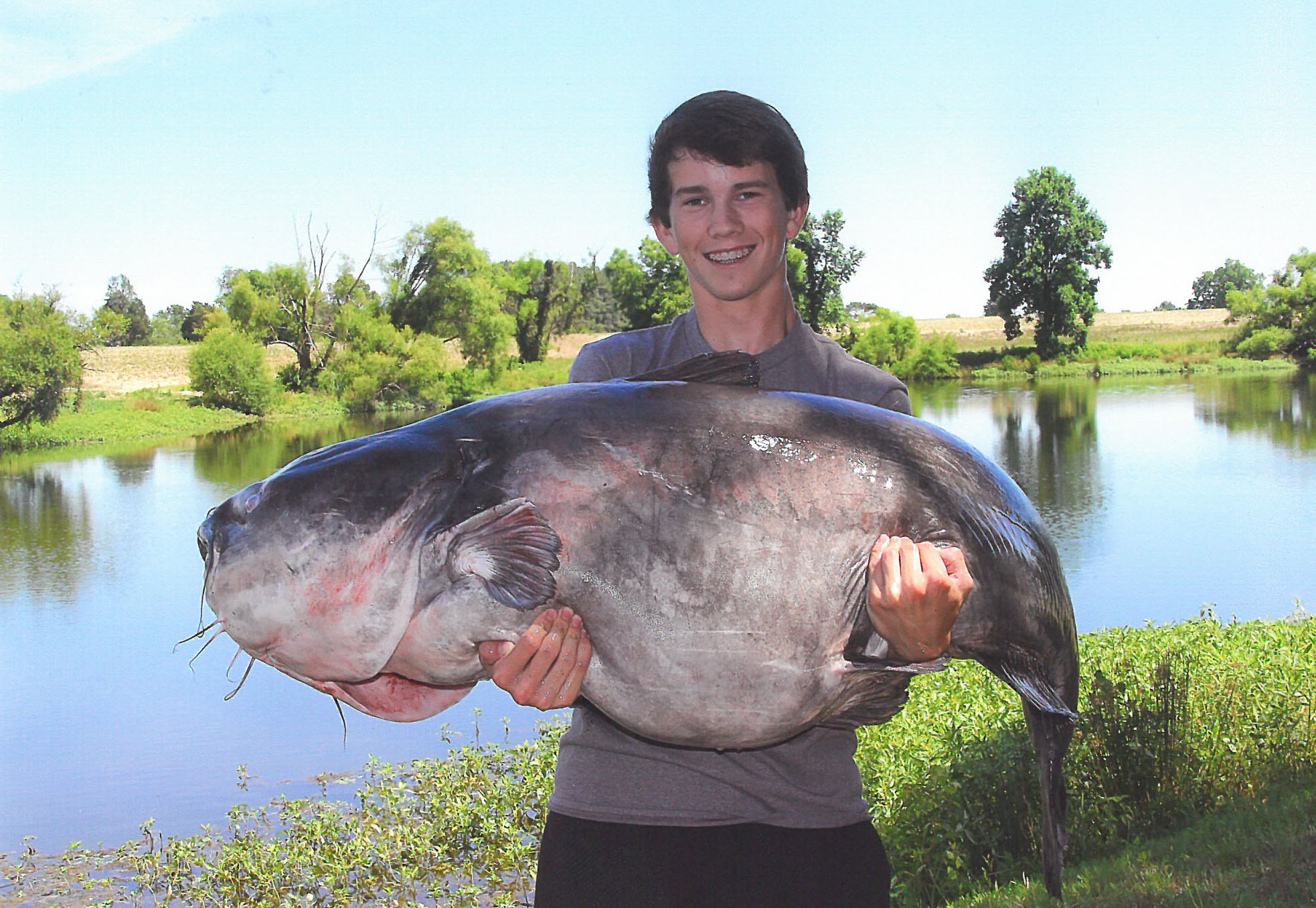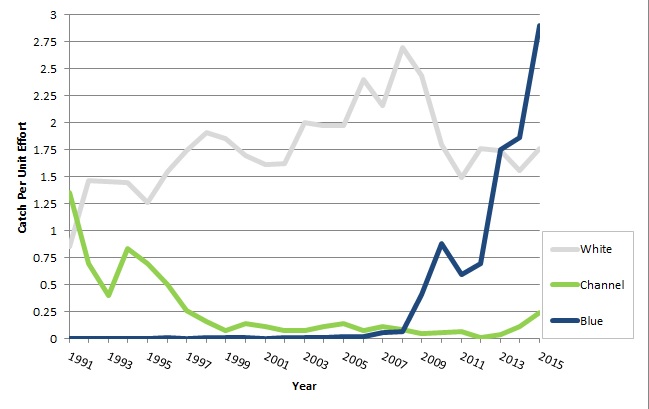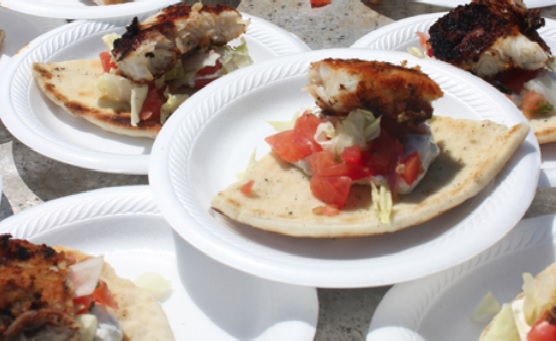
Landon Evans, 15, currently holds the state record for blue catfish — a 117-pound, 8-ounce fish — caught from Lake Gaston on June 11, 2016. Courtesy N.C. Wildlife Resources Commission
A 15-year-old angler reeled in a 117-pound blue catfish on Lake Gaston, N.C., in June, setting a new state record.
Perhaps it’s the bowl full of Halloween candy staring me in the face — remains after a slow night of goblins — but right now, the fish looks like something from an old monster movie. Despite the fish being profoundly homely with its blubbery lips, interminable whiskers and gigantic proportion, it is not quite an extraterrestrial being from outer space. It is, nonetheless, an alien, more often called an “invasive species,” that could harm our coastal ecosystems.
Blue catfish (Ictalurus furcatus) are widely distributed in the United States but are native to the Mississippi River Basin. They are the largest of all North American catfishes; are relatively easy to catch; and have white, flaky meat with a good texture. Its only natural predator is a fisherman on a lucky day. Thus, blue catfish are a recreationally valuable species. Its qualities as a food fish also make it a popular commercial species.
Over the past several decades, blue catfish have been introduced into several states, including our neighbors Virginia and South Carolina, as a trophy species and to increase species diversity for recreational anglers. The blue catfish population exploded in the past few years. The fish now inhabit North Carolina waterways. They are noticeably present throughout the Albemarle Sound (see Figure 1).

Figure 1. Abundance of adult catfish species — the native white and channel catfishes plus the non-native blue catfish — in the Albemarle Sound sampled by gill-net gear and indirectly measured by Catch Per Unit Effort (CPUE). Source Data: N.C. Division of Marine Fisheries Program 135
The population explosion has given rise to concern about how blue catfish affect the population recovery of certain fisheries in North Carolina, such as of blue crab, river herring and striped bass. The reason: Blue catfish are voracious and opportunistic predators, and their rapid growth and giant adult size mean they can eat a lot of fish, including large fish.
Restricting their advancement, to some degree, is their apparent affinity for less saline, warmer waters. Promoting human consumption and expanding commercial markets for blue catfish are possible management strategies. Some members of the local food movement strongly believe that eating invasive fish species is an ethical food choice. What do you think?

Catfish tacos anyone? Courtesy NOAA Chesapeake Bay Office
Here’s an opportunity for you to decide if blue catfish are worth eating. The North Carolina Coastal Federation has teamed up with North Carolina Sea Grant and Basnight’s Lone Cedar Café in Nags Head to bring you a special evening of dining, education and community. “Fish and Flights: Fighting Invasive Blue Catfish with Forks and Knives” will offer small-plate preparations featuring blue catfish crafted by Chef Bud Gruninger, whose culinary creations have been featured on the Food Network’s “Great American Seafood Cook-off.” This event will be held on Thursday, Nov. 17, from 6 to 8 p.m., at Lone Cedar Café.
In between dishes, Thomas Hennessey, a University of North Carolina at Chapel Hill undergraduate intern with the federation and Sea Grant, will briefly overview his research on the invasion of blue catfish to area waterways and the threat the fish pose to coastal ecosystems, as well as potential options to mitigate their spread.
A flight of North Carolina microbrews will round out the meal. Other beverages will be available for purchase. The cost for the event is $30, which includes all food, the tasting flight and tip. Net proceeds will go to support federation and Sea Grant research, conservation and education programs. Reserve your spot today by visiting tinyurl.com/bluecatfish.